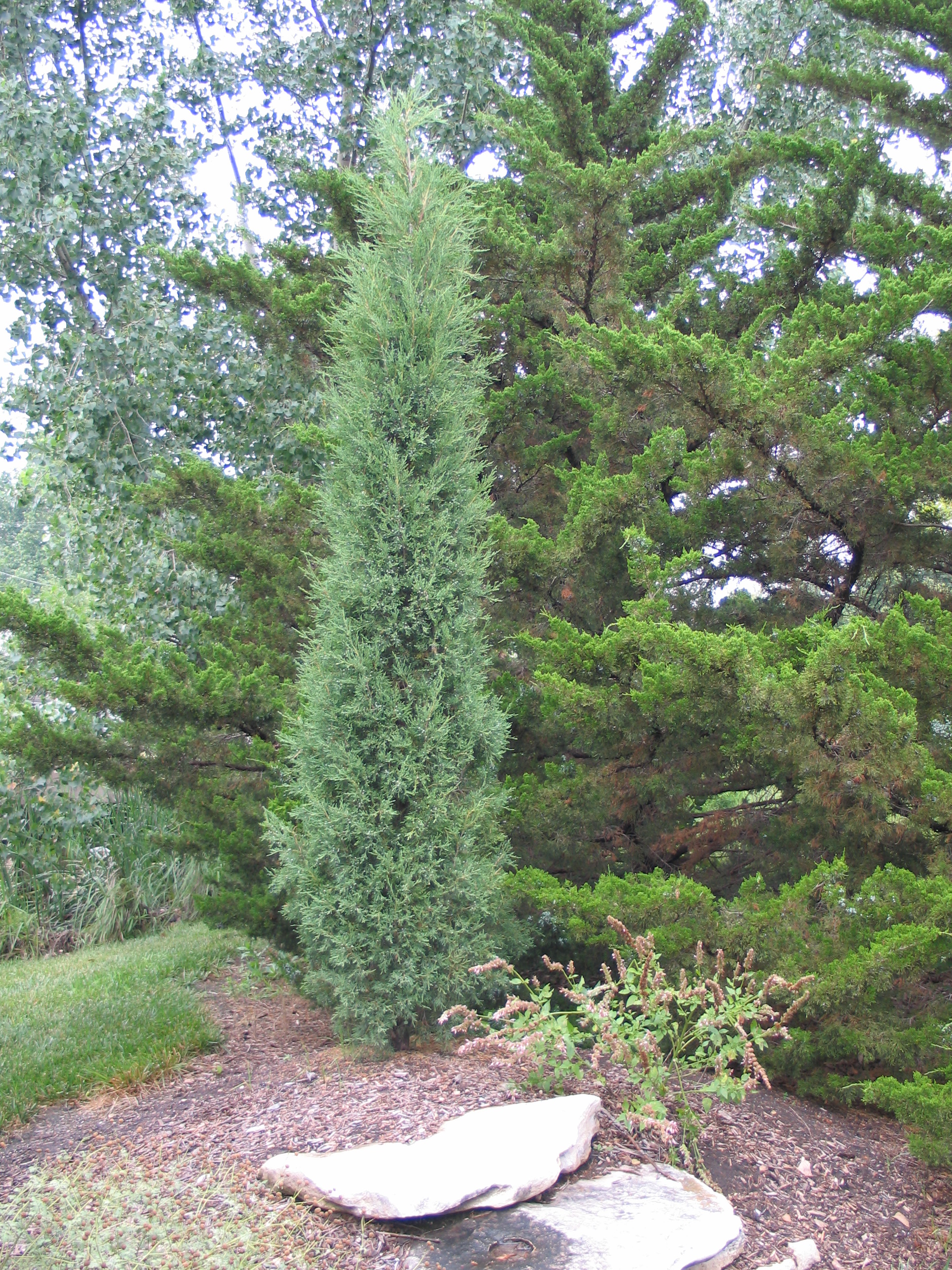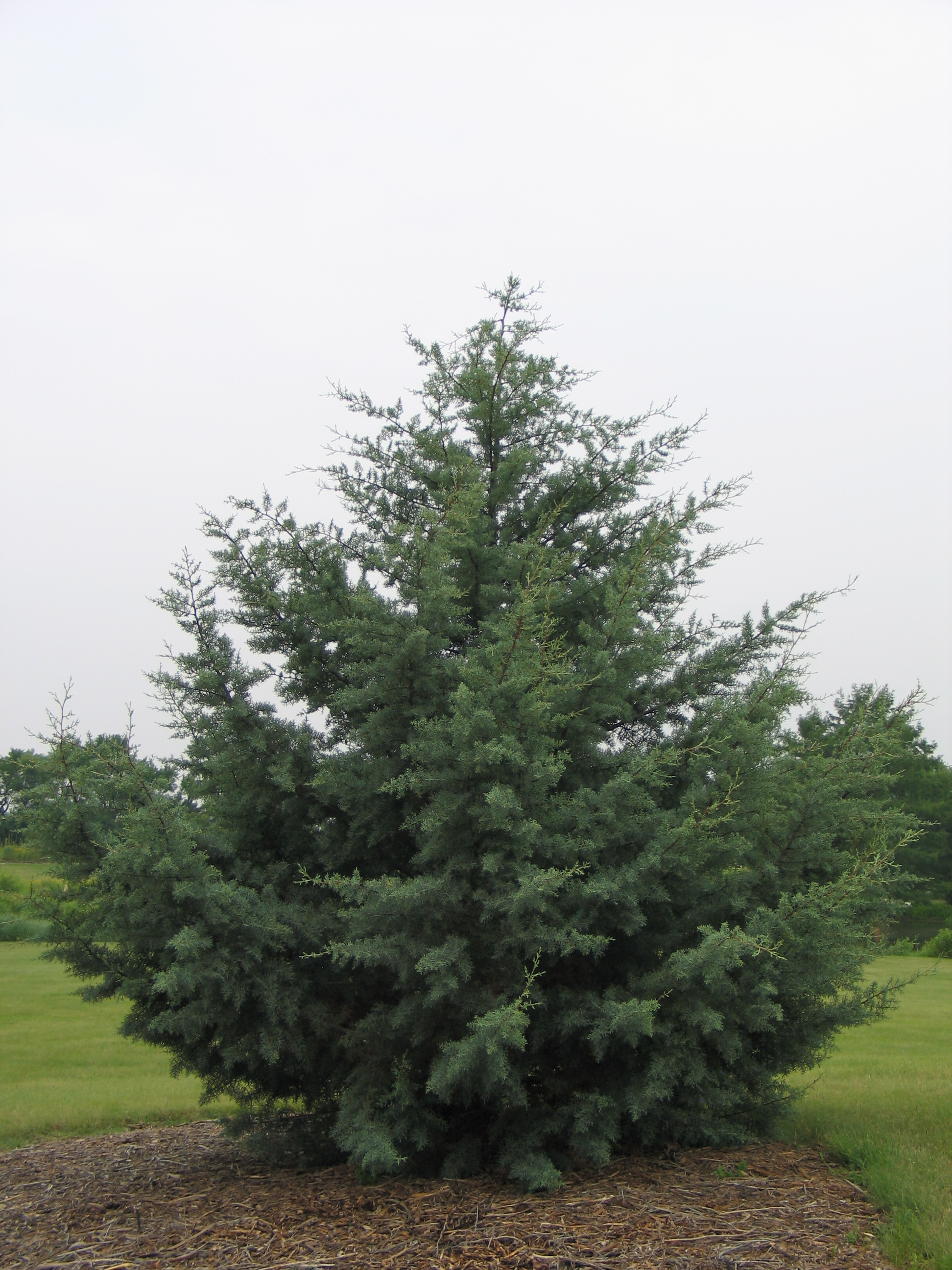The Kansas landscape can be stark and lifeless at certain times during the year. In the winter, the hues of brown are seen everywhere from the leafless deciduous trees to the native grasses in the prairies and ditches. This harsh landscape is only broken up or punctuated by evergreens.
During the growing season, they melt into their surroundings, but are exposed as the landscape changes in the fall and winter. Early settlers noticed their green forms and incorporated them into shelter belts and home landscapes to breathe warmth and life into a drab and dreary panorama.
Sadly, these conifers (cone-bearing seed plants) are under siege. They are being decimated by a variety of diseases that really have no reliable cure. Whole shelter belts have been lost to this onslaught. Trees that are 50-100 years old are gone in just a few years.
Even here at the arboretum we have felt the pain of losing evergreen trees. 35 years ago, when the arboretum was originally planted, these diseases were not known and certain conifer varieties were readily available and a more diverse plant selection was not installed. But those species have not proven resistant to disease, so we now have holes in our landscape where mature trees have died.
So what is the solution? I think that the final solution is diversity in the landscape. Just like you diversify your stock portfolio to spread out risk, we need to diversify the evergreens and conifers we include on our land and around our homes. Whole shelter belts have been lost because they included only a few species. Once infected, the diseases spread through the whole line of trees and result in large holes that are filled with other non-desirable species.
The extension service suggests that diseased and dead trees be removed immediately and destroyed either by fire or chipping. The stumps also need to be removed to a depth of at least 6 inches below the surface. Pathogens that spread the diseases overwinter in the dead trees and emerge or are released by April to infect other hosts.
The arboretum has been experimenting with a few conifer species that seem to be hardy and less susceptible to disease. They are Upright Chinese Juniper (Juniperis chinensis), Easter Red Cedar (Juniperis virginiana), which is the only evergreen native to the state of Kansas with cultivars ‘Canaertii, and ‘Taylor’, Black Hill Spruce (Picea glauca var. densata), Southwestern White Pine (Pinus strobiformis), Pinyon Pine (Pinus edulis), Lacebark pine (Pinus bungeana), and Arizona Cypress (Cupressus arizonica). This list is not extensive.
Pines like Ponderosa (Pinus ponderosa), Austrian (Pinus nigra) and Scotch (Pinus sylvestris) have been taken off the recommended tree list because they are so prone to disease. I would highly encourage you to visit the Kansas Forestry Service website at www.kansasforests.org . Once there choose your region to view a full list of recommended trees for your area along with other informative publications.
Full descriptions of these trees can be researched on the internet or you can come to the arboretum and view them in person. For certain species the time will come when they are completely eliminated from the landscape barring a cure. Healthy trees need to be properly pruned and given plenty of air circulation.
You can do everything right and still lose a tree. Replant with a diverse variety of species so your whole landscape will not be open to widespread devastation again. There will be other diseases that come, but diversity will give you the edge.




